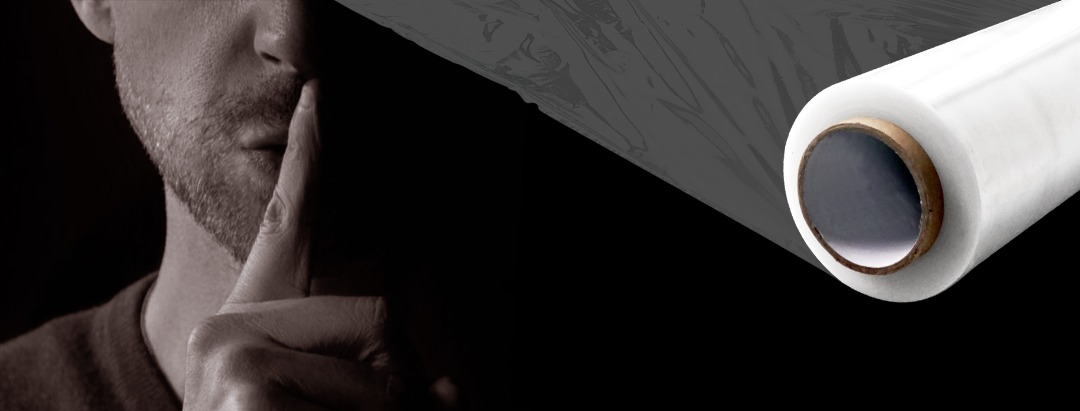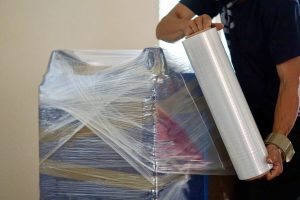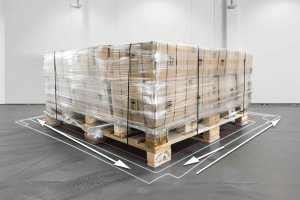
The rising myths about stretch films and the misconceptions on choosing the right film tend to confuse many. As a result, the benefits of stretch films becomes rather vague.
So let us look at some common myths about stretch film and what really matters to distributors and brand owners.
Stretch-film is highly in demand. Markets have risen from 250 million pounds per year to 500 million pounds between 1985 and 1990. It then swelled to 1 billion pounds, from 1990 to 1995.
Today, the film market is forecast to increase 1.4% yearly to 2.8 billion pounds – valued at USD4.1 billion – in 2024, and that is just in the US alone.
Despite its growth, many are still trying to understand how stretch film works and the best ways to reduce packaging costs to gain more at the bottom line.
Typically, these are some of the common myths about stretch film distributors and end-users are facing:
- Thicker means stronger
- Thinner multilayered films are better
- Cheap stretch films reduce costing and save you money
- Thickness defines quality
- Hand-wrapping is cheaper than Machine wrapping
We covered an article on the 8 Myths About Stretch Films that everyone should know about to highlight these common misunderstandings.
Though these are commonly debunked misconceptions, many still think thinner multilayered films “should be better.”
More layers means better holding force and protection right?
Wrong. Let’s uncover more below.
Uncovering Myths About Stretch Films: Is Thinner Better?
Whether thinner is better or not differs.
It depends on the situation.
Does the load need more revolutions of wrap or will thicker films help optimize your wraps?
The truth is wrapping your product with thin multilayered film does not mean better protection for your goods.
For optimal wrapping, you need to use the right film with the right wrapping method for your load.
What about the number of layers within the stretch film itself?
The stretch film market is constantly innovating.
There is a shift towards multi-layer co-extruded film creations. These films are designed to further improve technical properties such as tear and puncture resistance levels.
But multi-layered films doesn’t mean nano films. They are micron thin and highly elastic to wrap objects and hold them in place on pallets.
The convergence of polymer science, machine technology, and application advancement has led to significant downgauging opportunities.
Thinner gauge films are amazing! They have the same benefits, do the job just as well, and even help save costs too.
But What Is Nano Stretch Film?
They are made from thin plastic layers of material spanning from a fraction of a nanometer to several micrometres of multilayered stretch films.
The principal advantage of nano stretch film is that it allows a pallet’s thickness to be reduced while retaining a strong holding force.
However, not ALL films are the same and there are still some myths about stretch films in the market.
Here are three common myths and the truths behind it
1. Maximum stretch means maximum performance
Unfortunately, maximum stretch ratios do not equal minimum cost or maximum performance. Rather than an increased stretch level, its pallet stability ensures the most cost-effective pallet.
2. The more layers, the better
Thin multi-layer stretch films are not always superior to other film types. However, they perform well if you produce them properly (with the right materials, production, and process).
With the right process, the production process is always smooth and the pallet loads are always steady. The key to controlling costs is consistency.
3. It is always better to use thin films
Using thin films is great, but it does not always ensure pallet stability. A stable load on a pallet requires the same weight as thin and thick films.
Because thicker film requires fewer wraps, pallets require fewer wrappings. The thicker the film, the lesser the risk of damage. However, this requires extra film consumption and more production time too.
This is why Thong Guan emphasises quality over layers.
We have invested heavily in stretch films research, innovation and a top-notch testing lab to help you achieve optimum wrapping.
Here are Some Features of Our Multilayered Stretch Film
- Thin but tough: Nano stretch film is thin but tougher at the same time. It has an excellent holding and containment force for pallet load stability.
- Adaptable. It can be easily adapted to match wrapping machines.
- Since you use less stretch film, you can reduce your cost per load.
- Excellent durability against puncture and tearing the perforation
- Since its thin, less shelf space needed
- Excellent holding force (when correct wrappers’ settings).
- Eco-friendly: Consumes less film
Myths About Stretch Film Busted: What Are The Benefits Of Multilayered Film To Users?
- Businesses throughout the value chain can benefit from this new leap in technology. Multilayered technologies can have an additional productivity boost and offer greater flexibility.
- Brand owners benefit from source reduction in packaging materials. Operations are more productive. More packaging impressions are produced per roll of film.
- Retailers experience better consumer attention with attractive high-clarity packaging.
Our Nano Series has helped businesses save effort and gain more speed on their packaging. You get better protection due to greater holding force and less downtime due to consistency during wrapping. These are “invisible” costs that you now don’t have to worry about.
We know it would greatly help distributors, manufacturers, and logistics businesses with everyday wrapping processes so precious goods are safe, secure, and protected.
While there are many thin-layered stretch films available, we strive to formulate the best materials that can enhance elongation, propagation, and puncture properties to benefit our customers.
Garbage in, garbage out – cheap material equals cheap quality, resulting in damages, breaks, and additional costs.
With good quality multilayered films, you will enjoy performance, consistency, and the advantages of using thin film with the benefits thick films give.
Do More With Less: Breaking Myths About Stretch Films
The desire to do more with less is now a possibility.
With flexible stretch films with multiplayer properties, thicker does not necessarily mean stronger anymore.
Films can now be made thinner yet tougher to keep your loads safe.
Do you still believe that all thinner multilayered films are better?
Then, it’s time for a chat.
Let us show you, with data, how nano films can be superior for your load containment needs.
Contact us at info@thongguan.com for more info or to enquire more today.





